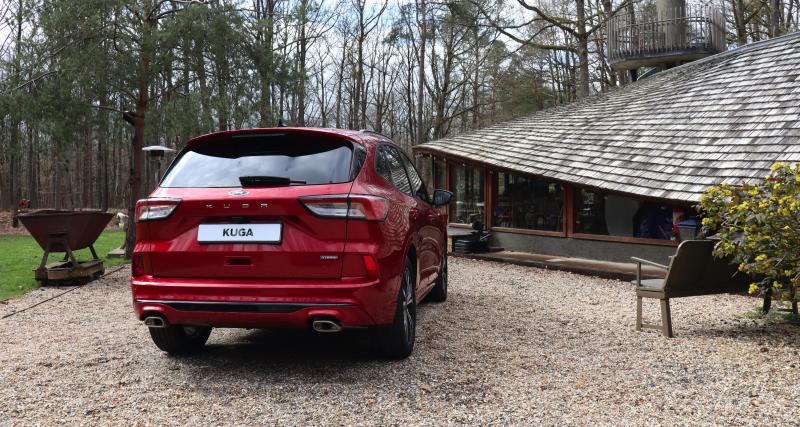[ad_1]
Zapping Autonews Green Electric cars: what’s new for 2022
Hybridization was already available in the Ford Kuga, with a mild hybridization diesel engine (no operation in 100% electric mode) and a rechargeable or “plug-in” hybrid gasoline engine (approximately 50 km achievable in all-electric mode). Kuga adds a simple hybrid version that is not wire-charged and has all-electric autonomy not exceeding three kilometers, but is lighter and reduces its consumption whatever the route. Here are three features that might convince you.
lower consumption

Ford Kuga full hybrid | Oval SUV test, our non-rechargeable hybrid photos+37
Ford Kuga full hybridCredit Photo – Autonews
The technical basis of the Kuga full hybrid is the same as that of the Kuga plug-in hybrid, with which it shares its 2.5-liter naturally aspirated engine and front electric motor. But with 190 hp instead of 225 hp, power is less important. But with no charger, no socket and a much more compact battery (1.1 kWh instead of 14.4 kWh capacity), the gain in weight is significant: 143 kilograms less. Thus, it increases from 1,844 kg to 1,701 kg. Its consumption benefits and performance are also because it gains in a tenth of a second at 0 to 100 km/h (9.1 s) despite its low power. With the average consumption we have stated at 5.9 l./100 km on 106 km mixed routes, 5.0 l./100 km on 19 km secondary roads, 6.0 l./100 km on 12 km at 110 km/h, the average consumption is 130 At 20 km/h and 7.4 l./100 km, it shows good sobriety and remains reasonable on the highway. Its 54-liter tank (versus 45 for the Kuga plug-in hybrid) lets it hope to be able to travel more than 1,000 km depending on the route.
Various variants are available

Ford Kuga full hybrid | Oval SUV test, our non-rechargeable hybrid photos+37
Ford Kuga full hybridCredit Photo – Autonews
Its durability places it as an alternative to diesels driven from cities and less smooth running in urban areas. The latter retains the price advantage at the pump, but the Flexifuel version of the Kuga full-hybrid arrives in the second half of 2021. Capable of running on unleaded or E85 bioethanol, it will then become more competitive on the fuel budget. expected increase in consumption. A financial benefit to add to the hybrid’s lower maintenance cost.
In addition, the integration of the Kuga plug-in hybrid model with its more compact battery on one side of the chassis makes it possible to optionally pass a transmission shaft to the rear wheels, making the Kuga four-wheeled. driver model. In this case, the battery becomes a little larger (1.4 kWh).
a significant volume

Ford Kuga full hybrid | Oval SUV test, our non-rechargeable hybrid photos+37
Ford Kuga full hybridCredit Photo – Autonews
Whatever the engine, the Kuga boasts a generous interior befitting a family SUV, due to the significant growth in this third generation of the model, especially thanks to its 4.61m-long hood. Originally a compact SUV, the vehicle offers an upper-middle interior compared to its smaller rivals. Rear legroom is generous, with the bench seat sliding and backrests reclining. Depending on their location, trunk volume varies from 411 liters to 581 liters. At this point, placing the 12V battery under the floor of the loading area elevates it and reduces space compared to the 100% thermal Kugas (475 to 640 litres), but remains generous with more space around the battery.
What could cause you to hesitate

Ford Kuga full hybrid | Oval SUV test, our non-rechargeable hybrid photos+37
Ford Kuga full hybridCredit Photo – Autonews
If its price is logically lower than that of the Kuga plug-in hybrid, the drop is not as significant as one might expect. The base price is €3,000 less than an equivalent version, €37,000 or €6,000 more than the less powerful petrol version (150 hp) and without an automatic gearbox.
to summarize
The third generation of Ford Kuga is still offered with a new engine type: simple hybridization or “full hybrid”. Here are three features of this new version that we had to try recently.

[ad_2]
Source link